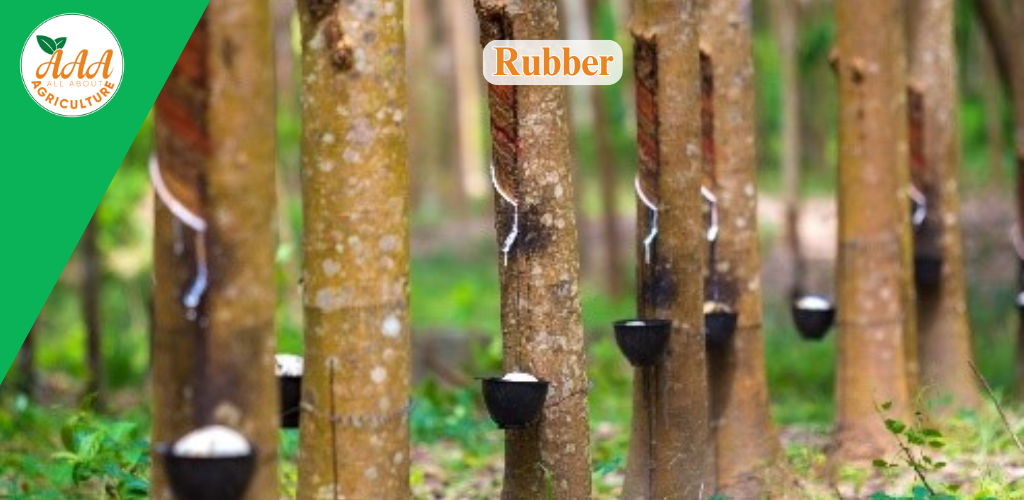Rubber
Rubber

Production in India
- What is Rubber?
Botanical name: Hevea brasiliensis
A tropical tree crop grown for latex, used to make natural rubber.
Latex is a milky fluid tapped from the bark and processed into rubber.
Used in tyres, footwear, gloves, adhesives, and over 40,000 products!
- India’s Global Rank in Rubber
India ranks 6th globally in natural rubber production.
Leading countries: Thailand, Indonesia, Vietnam, China, Malaysia, then India.
- Top Rubber Producing States in India
Rank State Contribution (%)
1. Kerala ~75%
2. Tripura ~15%
3. Karnataka ~5%
4. Tamil Nadu ~3%
5. Assam & Meghalaya ~2%
Kerala is the Rubber Capital of India, especially in Kottayam district.
- Climate & Temperature Requirements
Type: Perennial tropical plantation crop
Temperature: 25°C – 35°C (ideal is 28°C–30°C)
Rainfall: 2000–3000 mm annually
Humidity: High relative humidity (75–95%) is ideal
Altitude: Best below 500 m above sea level
Sunlight: Requires bright sunshine and evenly distributed rainfall
- Soil and Agronomy
Soil type: Deep, well-drained laterite or loamy soil
pH: 4.5 – 6.5
Planting time: June–July (monsoon)
Spacing: 6 x 6 meters
Tapping starts: 6–7 years after planting
Productive life: Up to 32 years
Yield:1500–2000 kg of dry rubber/ha/year under good management
- Economic Importance
Backbone of rubber-based industries – over 6000 small-scale rubber units.
Supports livelihoods of over 10 lakh rubber growers, mostly small farmers.
Key for tyre, automotive, defense, healthcare, and export industries.
India imports and exports rubber depending on demand and price fluctuations.
- Attractive & Interesting Facts
Rubber Board of India (HQ: Kottayam, Kerala) manages rubber development.
Natural rubber is eco-friendly and biodegradable.
India is promoting sheet rubber, latex concentrate, and block rubber production.
Rubber trees also help in carbon sequestration and are part of agroforestry models.